The Darina Allen Column
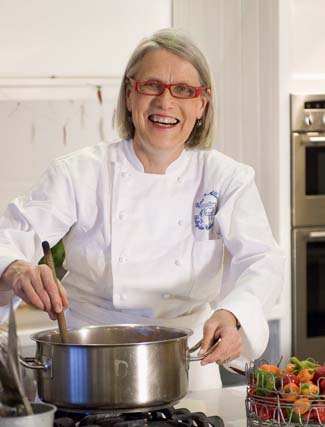
This month Darina talks about the pleasures - and rewards - of foraging. You’ll find lots more foraging information and recipes in her wonderful book Forgotten Skills of Cooking (Kyle Cathie).
Foraging beware you can get hooked, it is so fun that it quickly becomes addictive. Where others merely see a clump of weeds we visualise a yummy dinner.
We’ve had several exciting foraging courses recently including one Slow Food foraging session. All were packed with people eager to learn what for many is an almost forgotten skill. It’s free and available in both urban and rural areas, in the woods, by the sea shore, in the fields, on stone walls, all year round.
Unbelievable but true, just walk outside your door, open your eyes in a new way, what do you see? Any daisies, primroses, dandelions. They are all edible, pluck the little petals from the daisy and scatter them over a salad, that’s called ‘daisy confetti’, how cute is that.
Dandelion leaves and flowers are both edible. The leaves are quite bitter but fantastically good for you. For many of us ‘Bitter’ is an acquired taste, we’ve become used to the easy sweetness of tame vegetables.
I love it but if you’d rather a more delicate flavour, cover the dandelion plant with a bucket or lid to blanch the leaves to pale yellow just like the ones you’ll find in French bistro salads. The familiar yellow flowers make delicious dandelion fritters as do the leaves of comfrey. We crystallize many of the wild flowers including primroses and violets.
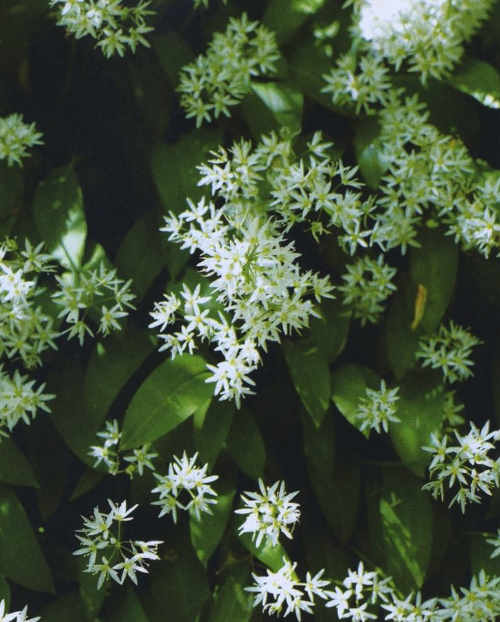 The stone walls around our boundary are encrusted with little fleshy discs of pennyworth – soo good in salads. The wild garlic season is in full swing. The woods and shady places are full of the broad leaf ransomes (allium ursinum). Many country roads are edged with allium triquetrum, the pretty three corned leek which has narrow leaves and resembles a white bluebell. Both types are edible but the wide leaves of the ransomes are perhaps more versatile for the cook. We love them in soups, salads, champ, pesto. The pretty white flowers garnish starter plates and are sprinkled into the green salad every day while the season lasts.
The stone walls around our boundary are encrusted with little fleshy discs of pennyworth – soo good in salads. The wild garlic season is in full swing. The woods and shady places are full of the broad leaf ransomes (allium ursinum). Many country roads are edged with allium triquetrum, the pretty three corned leek which has narrow leaves and resembles a white bluebell. Both types are edible but the wide leaves of the ransomes are perhaps more versatile for the cook. We love them in soups, salads, champ, pesto. The pretty white flowers garnish starter plates and are sprinkled into the green salad every day while the season lasts.
The alexanders are flowering now so stalks are tough but the seeds can be dried and used in salads and pickles. Bitter Cress or Winter Cress with its slightly peppery flavour is another favourite, reminiscent of radish. It grows in little clumps like a weed, both in gravel paths and in soil. It has shallow roots and like all cresses the top leaf is the biggest, another tasty addition to the salad bowl. Some may be flowering now, tiny white flowers...
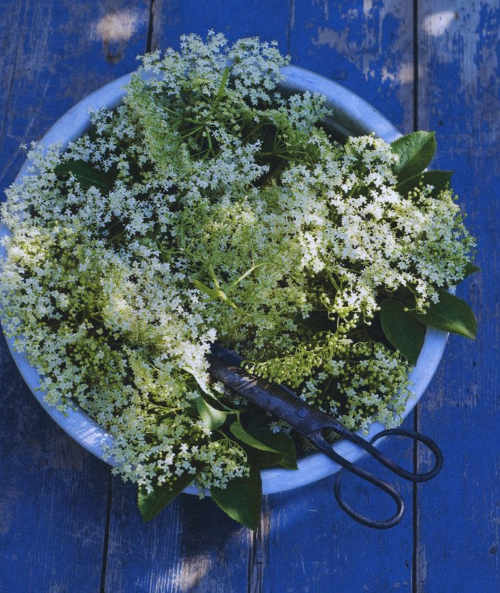 Scurvy grass is available all year, so called because its high vitamin c content protected sailors from scurvy (cochlearia officinalois) You’ll find lots of uses for the fleshy leaves and slightly peppery taste. The pretty flowers can be also be scattered over salads. It grows along the seashore and in saline conditions.
Scurvy grass is available all year, so called because its high vitamin c content protected sailors from scurvy (cochlearia officinalois) You’ll find lots of uses for the fleshy leaves and slightly peppery taste. The pretty flowers can be also be scattered over salads. It grows along the seashore and in saline conditions.
Wild Sorrel is also abundant at present, its tiny spear shaped leaves grow out of the grass in fields, ditches and along the cliffs. The leaves of Bucler leaf sorrel are also small and are shaped like an old bucler shield. Its tart zingy lemony flavour adds a clean fresh note to salads, sauces and soups.
At the launch of the Kerrygold Ballymaloe Literary Festival of Food and Wine this year, Katie Sanderson and Jasper O Connor at the Fumbally Café in Dublin paired sorrel with honey carrageen moss pudding, a totally delicious and inspired combination. These two young chefs are worth watching, if you haven’t already been to the Fumbally put in on your Dublin list.
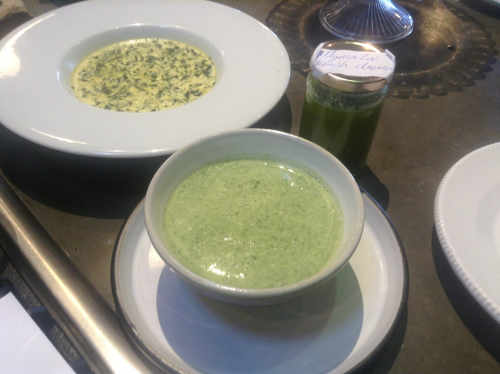 Foragers Soup
Foragers Soup
Throughout the seasons one can gather wild greens on a walk in the countryside – foraging soon becomes addictive. Many greens are edible and some are immensely nutritious. Arm yourself with a good well-illustrated guide and be sure to identify carefully and if in doubt – don’t risk it until you are quite confident. Don’t overdo the very bitter herbs like dandelion.
Serves 6
50g (2ozs/1/2 stick) butter
110g (4ozs) diced onion
150g (5 ozs) diced potatoes
250g (9ozs) chopped greens – alexanders, nettles, wild sorrel, a few young dandelions, wild garlic, borage leaves, wild rocket, ground elder, beech leaves, chickweed, watercress
600ml (1 pint/2 1/2 cups) light chicken stock
600ml (1 pint/2 1/2 cups) creamy milk
75g (3ozs) chorizo or lardons of streaky bacon
extra virgin olive oil
wild garlic flowers if available
Melt the butter in a heavy bottomed saucepan. When it foams, add potatoes and onions and turn them until well coated. Sprinkle with salt and freshly ground pepper. Cover and sweat on a gentle heat for 10 minutes.
When the vegetables are almost soft but not coloured add the hot stock and boiling milk. Bring back to the boil and cook until the potatoes and onions are fully cooked.
Add the greens and boil with the lid off for 2-3 minutes approx. until the greens are just cooked. Do not overcook or the soup will lose its fresh green colour.
Purée the soup in a liquidiser. Taste and correct seasoning.
Heat a little oil in a frying pan. Add the diced chorizo or lardons of streaky bacon, cook over a medium heat until the fat starts to run and the bacon is crisp. Drain on kitchen paper.
Sprinkle over the soup as you serve. Use the chorizo oil to drizzle over the soup also and scatter a few wild garlic flowers over the top if available.
Honey Carrigeen Moss Pudding with Sorrel and Chocolate Soil
A delicious way to serve Carrigeen moss pudding, the brain child of Jasper O’ Connor and Katie Sanderson of the Fumbally Café in Dublin. www.thefumbally.ie
Serves 6
7g (1⁄4oz) cleaned, well-dried carrageen moss (1 semi-closed fistful)
900ml (1 1⁄2 pints/3 3/4 pints) whole milk
1 vanilla pod or 1⁄2 teaspoon pure vanilla extract
1 organic egg
1-2 tablespoons honey
Chocolate Soil
100 g (3½ ozs) caster sugar
2 tablespoons water
75 g (3 ozs) dark chocolate chopped or grated into small chunks
225 g (8 ozs) sorrel, desalked
Freshly squeezed apple juice made from Granny Smith apples
To Serve
Softly whipped cream
Soak the carrageen in a little bowl of tepid water for 10 minutes. It will swell and increase in size. Strain off the water and put the carrageen into a saucepan with the milk and the vanilla pod, if using. Bring to the boil and simmer very gently, covered, for 20 minutes.
At that point and not before, separate the egg, put the yolk into a bowl, add the honey and vanilla extract, if using, and whisk together for a few seconds, then pour the milk and carrageen moss through a strainer onto the egg yolk mixture, whisking all the time.
By now the carrageen remaining in the strainer will be swollen and exuding jelly. You need as much of this as possible through the strainer and whisk it into the egg and milk mixture. Test for a set in a saucer as one would with gelatine. Whisk the egg white stiffly and fold or fluff it in gently; it will rise to make a fluffy top. Chill and allow to set for 3-4 hours or overnight.
Meanwhile make the chocolate soil. In a saucepan on a medium to high heat place the sugar and water, give it a stir but try not get any water crystals on the side. The sugar will melt and start to boil and bubble. You want the mixture to reach to 135C. If you don’t have a thermometer the mixture will start to turn a golden brown.
At this stage you want to work fast and pour the chocolate mix into the pot while whisking. It will dry out and turn to soil almost immediately. Magic. Cool on a nonstick baking tray. It keeps for ages.
Next mix 3 parts sorrel juice with 1 part freshly squeezed Granny Smith apple juice or to taste.
To serve pour a little sorrel and apple juice into a glass. Top with carrageen. Pop a little blob of softly whipped cream on top and sprinkle with chocolate soil. Serve.
Wild Garlic Champ
A bowl of mashed potatoes flecked with wild garlic and a blob of butter melting in the centre is ‘comfort’ food at its best.
Serves 4-6
1.5kg (3lb) 6-8 unpeeled 'old' potatoes e.g. Golden Wonders or Kerrs Pinks
50-75g (2-3 oz) wild garlic leaves, roughly chopped
350ml (10-12fl oz/1 1/4 – 1 1/2 cups) milk
50-110g (2-4oz/1/2 – 1 stick) butter
salt and freshly ground pepper
Wild garlic flowers
Scrub the potatoes and boil them in their jackets.
Put the roughly chopped wild garlic leaves into a saucepan. Cover with cold milk and bring slowly to the boil. Simmer for about 3-4 minutes, turn off the heat and leave to infuse.
Peel and mash the freshly boiled potatoes and while hot, mix with the boiling milk and wild garlic, beat in the butter. Season to taste with salt and freshly ground pepper. Serve in 1 large or 6 individual bowls with a knob of butter melting in the centre.
Wild garlic mash may be put aside and reheated later in a moderate oven, 180°C/350°F/Gas Mark 4. Cover with tin foil while it reheats so that it doesn’t get a skin.
Just before serving put a blob of butter into the centre and sprinkle with wild garlic flowers if available.
'30 Years at Ballymaloe' - Bord Gáis Avonmore Cookbook of the Year 2013
Good Food Ireland Cookery School of the Year 2012/2013
***
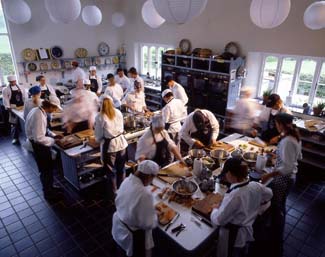 Once again, the Ballymaloe Cookery School in East Cork has a great programme of cookery courses for all interests and abilities running throughout 2015. Ranging from a relaxing visit to sit in on an afternoon cookery demonstration to a week long ‘Intensive Introductory Course’.
Once again, the Ballymaloe Cookery School in East Cork has a great programme of cookery courses for all interests and abilities running throughout 2015. Ranging from a relaxing visit to sit in on an afternoon cookery demonstration to a week long ‘Intensive Introductory Course’.
Sitting in the middle of a 100 acre organic farm the Ballymaloe Cookery School provides its students not only with a life skill learnt under the expert tutelage of their very capable teachers but also a place to relax and unwind from the stresses and strains of normal everyday life. The cottage accommodation available onsite for residential courses consists of a collection of delightful converted outbuildings which have been transformed over the years by the Allens, and other accommodation is available locally for the short courses.
www.cookingisfun.ie





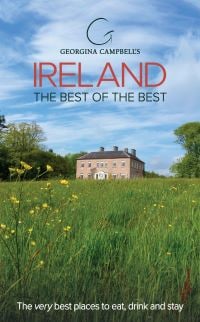
There are currently no comments
Leave a comment
Not a member? Register for your free membership now!
Or leave a comment by logging in with: